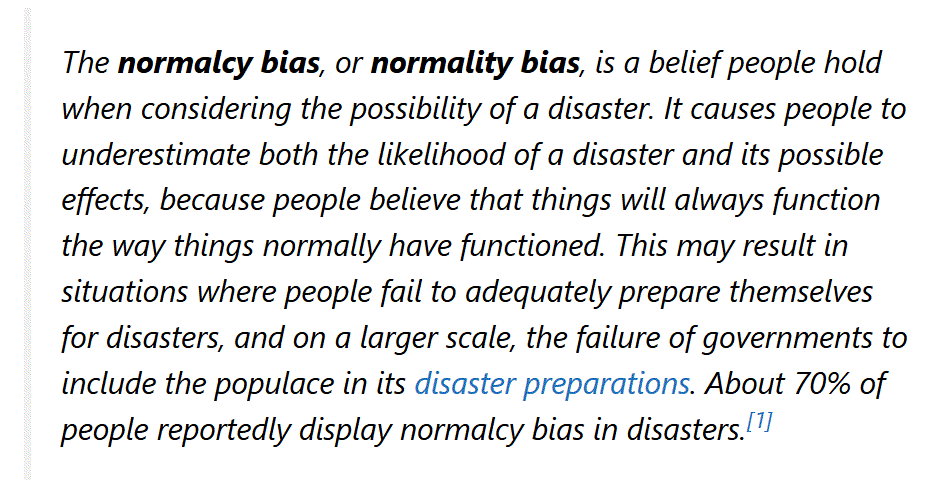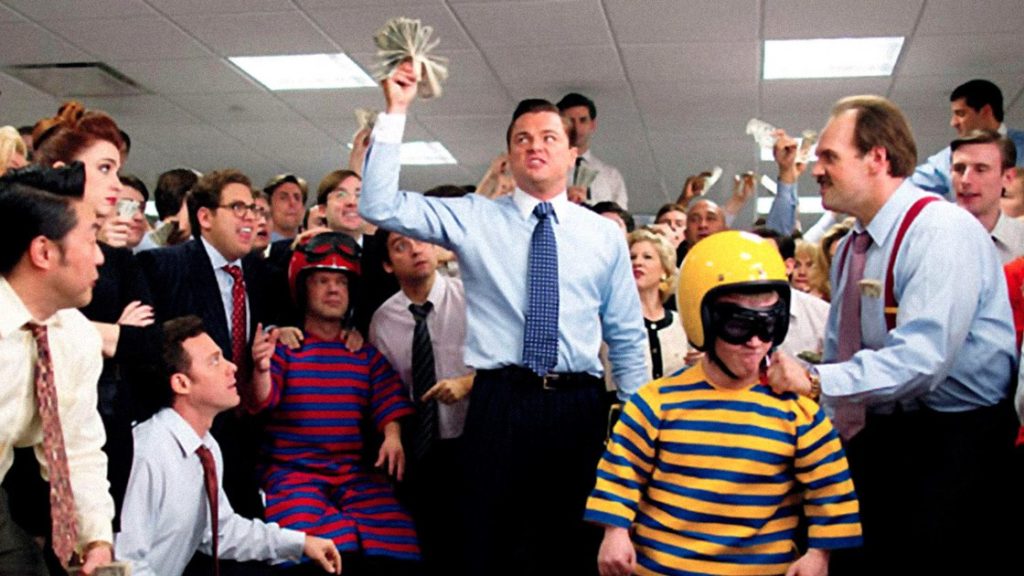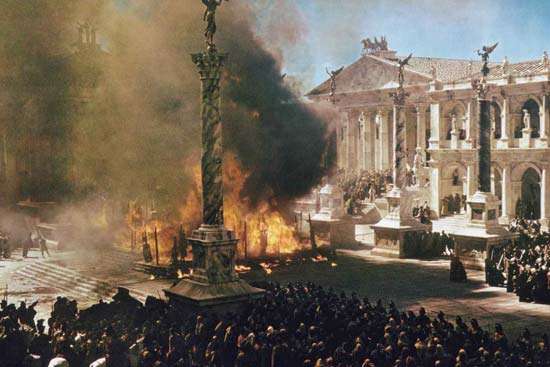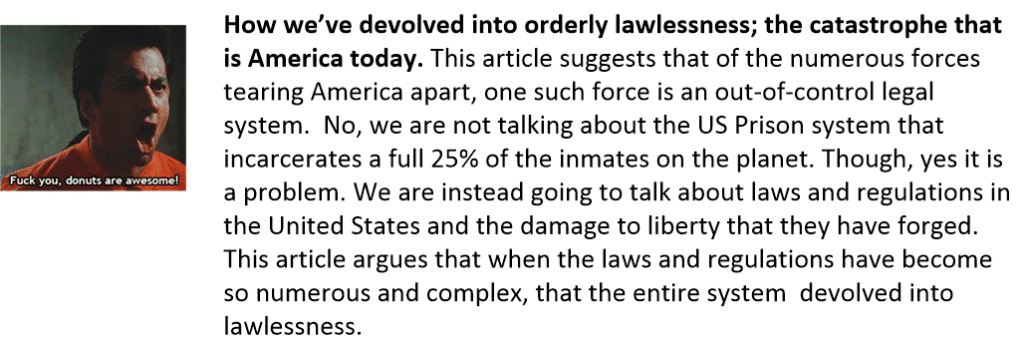Nope, this isn’t your run-of-the-mill “doom porn”. Instead, most everyone realizes that the Untied States is in the process of some changes. Some predict that the changes are merely “adjustments” towards a better, more improved, society. While others stand outside holding a sign saying “The End of the World is Near!”. Here are my thoughts on the changes that America will go through during the decade of the 2020’s.
It could be anything from a whimper to a bang…
The Sky is Falling!
Not so very long ago, societal collapse was a big topic of conversation. Most critics of the current world order wrote in screeching big bold letters that the entire financial “house of cards” was going to fall apart. Usually they centered on economics, as the financial system has become so complex that no one can explain it, let alone predict it. It became a monster, a hydra, that was careening out of control.
- Complexity and Crisis in the Financial System
- Complexity, Not Size, Determines Banks’ Risk to Financial …
- Terrorism and the American Financial System | Congressman …
- Complexity and Crisis in the Financial System: Critical …
Indeed, the run-up to the mortgage crisis had tons of people promoting economic collapse theories.
A decade earlier, the Y2K panic ushered in theories of technological collapse. Of course, the zombie apocalypse movies and TV shows are a regular part of the pop media rotation.

Societal collapse, however, is probably not in the cards.
Tainter comments.
The best known treatment of the issue is by Joseph Tainter.
In his Collapse of Complex Societies, Tainter makes the point that collapse in the modern age is unlikely. He states this belief under the assumption that all complex societies are dependent on one another.

Therefore, when one society begins to fail, the rest will provide support to prevent the rapid disintegration of the failing society.
In other words, the modern age is a network of reciprocal relationships between complex societies.
In the case of America, the rest of the world needs America in order to remain intact. Some nations more than others. Thus, a crisis in America will be met with a response from Europe, Asia and even South America.
In 2018, China shipped 18% of its exports to the United States. That contributed to a $419 billion trade deficit. China's trade with Hong Kong, at 14%, was almost as much. Its trade with Japan, which was at 6%, and South Korea, at 4.5%, was much less. - China Economy: Facts, Effect on US Economy
The internal response to crisis will include global support for repairing the internal problems of America.
Of course, this network of relationships may not arrest the decline, but it will prevent complete collapse. The rest of the complex societies will ease America into the autumn of its existence, thus buying themselves time to adjust.
They will “decouple” from the USA. They will no longer being so closely tied to the economic, financial, social, military and political networks established int he United States.
There is evidence that this is already in process.
- Forced U.S.-China Decoupling Poses Large Threats
- US and China — the great decoupling – Nikkei Asian Review
- US and China: From Co-Evolution to Decoupling | YaleGlobal
U.S. Decoupling From China Forces Others To Decouple From U.S. The U.S. is decoupling itself from China. The effects of that process hurt all global economies. To avoid damage other countries have no choice but to decouple themselves from the U.S.. -MoA
An alternative view.
An alternative to this analysis comes from John Michael Greer. He wrote a paper on what he termed catabolic collapse.
The general theory is that all human societies create complex institutions and social structures that require maintenance. Over time, the cost of maintaining them begins to exceed capacity. The solution is a deliberate downsizing where these complex systems are abandoned in order to focus resources on the core functions of society.
Complex societies don’t collapse. They downsize.

Greer’s idea is a variation of the Tainter theory, in that it focuses on the material aspects of society.
In the Tainter view, collapse is like bankruptcy that ends in a liquidation of the society. Greer’s view is a bankruptcy that leads to a reorganization of society going through bankruptcy, so it can reemerge simpler and more viable.
In reality, both ideas are working from the same assumption. That is, human societies grow inefficient over time and that inefficiency eventually reaches a tipping point.

The Collapse Event
One issue that is a problem when discussing these theories of societal collapse is we tend to think of collapse as something that happens relatively quickly.
That is, it happens not just in our lifetime, but overnight.
One day things are going along just fine and the next day the wheels are coming off the cart. It is the image of Rome at its peak compared to the image of hairy barbarians scaling the walls. We naturally want to think of collapse as the sudden, unexpected death of society.
Collapse is most likely experienced in fits and starts, with those fits and starts spanning lifetimes. For example, the men who founded the American empire in the early 20th century passed out of this world seeing their creation in the throes of the cultural revolution of the 60’s and 70’s. The so-called greatest generation that inherited the empire from the founders, were re-engineering American society so their rotten kids would stop rioting in the street and burning the college campus.
The generation that founded the empire probably thought it was headed for collapse, but by that point they were too old to care. It did not collapse. American society stabilized, regained its footing and started to recover in the 1980’s and 1990’s, with the great economic and technological boom.

Ironically, the baby boomers are experiencing what their grandparents experienced as they head for the void. They are seeing what appears to be the collapse of American society in a spasm of multicultural rage.
A half century ago, California was the epicenter of the cultural revolution that threatened to collapse society. It is the test bed for the multicultural favela the rage heads in the ruling class have planned for the nation.
Today, they have rolling blackouts in a third world effort to keep from setting the state on fire. Their efforts to manage air pollution, a great crusade in the 1860’s and 1970’s, is beginning to fail. Their pension system is effectively bankrupt, just waiting to collapse in the next decade.
In other words, the spasm of decline and near collapse of a half century ago was part of a cycle of decline.
An interregnum
This crisis will probably be followed by some correction, where things settle for a while, but never return to the prior normal. Just as the 1980’s never reached the level of social accomplishment of the post-war years, the next period of tranquility will fall far short of the 1980’s and 1990’s.
It will simply be an interregnum between one period of crisis and the next, another step down the ladder of collapse.
At some point, the old social capital of the prior greatness is exhausted. The Romans were a spent people for over century before the collapse. In fact, they were arguably done in the third century.
The real question about the late Roman Empire is how it managed to stagger on for so long.

That may be where we are now in present day America. The next step down the ladder of decline may be so unstable that the weight of past error crashed society through to the bottom.
The case for this theory of collapse is the rapidly shrinking white middle-class.
Shrinking of the White Class
It’s not just shrinking as an economic institution, but as a cultural one. The dominant culture today is one that celebrates degeneracy and barbarism. Bourgeois culture remains, but unlike the 1980’s, it is not front and center, offering a stabilizing point to arrest the cultural turmoil of the day.
The antidote to what’s happening today is not a man in a sundress demanding the rest of us pretend he is a girl.
Facing the fall…
In addition to the shrinking influence of bourgeois white culture, there is the growing sense that what’s left of America is not worth saving.
Everyday, more and more white people come to the conclusion that the people they see in politics, the media and popular culture are incompatible with the world they want for themselves and their decedents.
That old bourgeois white culture is looking at America like the family exhausted by an alcoholic relative. It’s time to cut our losses.
Conclusions
America is collapsing. It will collapse in a long, slow drawn out manner. It will not be fast, though there will be some very spectacular events that will stun the viewing audience. Many people who have the knowledge and ability to retard the collapse are quietly scurrying to protective safe havens and enclaves.
Perhaps, you the reader, should also take heed.

SHTF and Related Index





















































Some prepper humor…

Articles & Links
You’ll not find any big banners or popups here talking about cookies and privacy notices. There are no ads on this site (aside from the hosting ads – a necessary evil). Functionally and fundamentally, I just don’t make money off of this blog. It is NOT monetized. Finally, I don’t track you because I just don’t care to.
- You can start reading the articles by going HERE.
- You can visit the Index Page HERE to explore by article subject.
- You can also ask the author some questions. You can go HERE to find out how to go about this.
- You can find out more about the author HERE.
- If you have concerns or complaints, you can go HERE.
- If you want to make a donation, you can go HERE.

